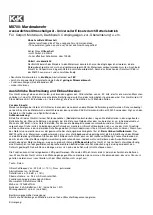
Modem Dialout Configuration
Access-T can dial out to report alarms automatically to an ASCII terminal,
network management system (NMS), or SNMP-based manager. The type of
dialout depends on the setting of the
REPORT METHOD
parameter as described
under Alarm Reporting Method earlier in this chapter.
Remember that dialout occurs on changes from the alarm state to the normal
state, as well as on changes from normal to alarm.
The Set Modem Dialout Menu
The Set Modem Dialout drop-down menu (
SYSTEM—SET MODEM DIALOUT
) lets you
set the following dialport parameters:
•
Two dialstrings— primary and alternate (default equals no dialstring).
•
Start and stop times for each dialstring (default equals 00:00).
•
Wait-for-Connect time, in seconds (default equals 30).
•
Inactivity Timeout, in minutes (default equals 0).
•
Dialport Backoff, in minutes (default equals 60)
Note:
The dialout function operates only while the Access-T
SYSTEM—COMMUNICATION—INTERFACE
option is set to
MODEM
or
DATAKIT
.
Access-T allows two dialstrings, primary and alternate, to be defined for alarm
dialout. Each dialstring can contain up to 36 characters. Modem dialstrings must
begin with the Hayes command component, ATDT or ATDP, followed by the
phone number. Datakit dialstrings do not require the Hayes command com-
ponent.
A start time and stop time are defined for each dialstring. A dialstring is active
for the period from its start time to its stop time. (If the start and stop times are
the same, the dialstring will remain inactive and no dialout will occur.)
When
an alarm occurs for which dialout is enabled, Access-T will dial out using the
currently-active dialstring. If no dialstring is active, dialout does not occur. If
both dialstrings are active, Access-T will first use the primary dialstring, and
then if no connection is made, will use the alternate dialstring.
If, after the active dialstring has been sent, no connection is established (e.g., if
the line is busy), Access-T will hang up and dial again. This cycle will repeat until
ACST-0351-005
Chapter 6
June 1996
Configuration Procedures
6-25
















































